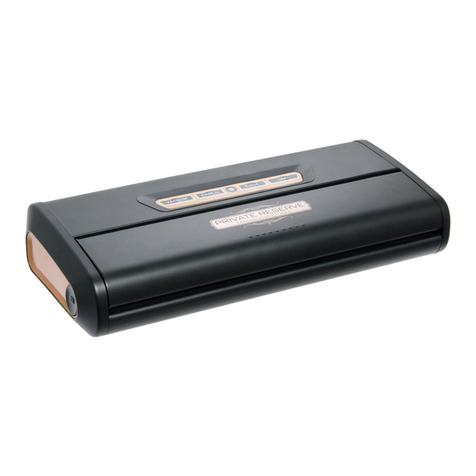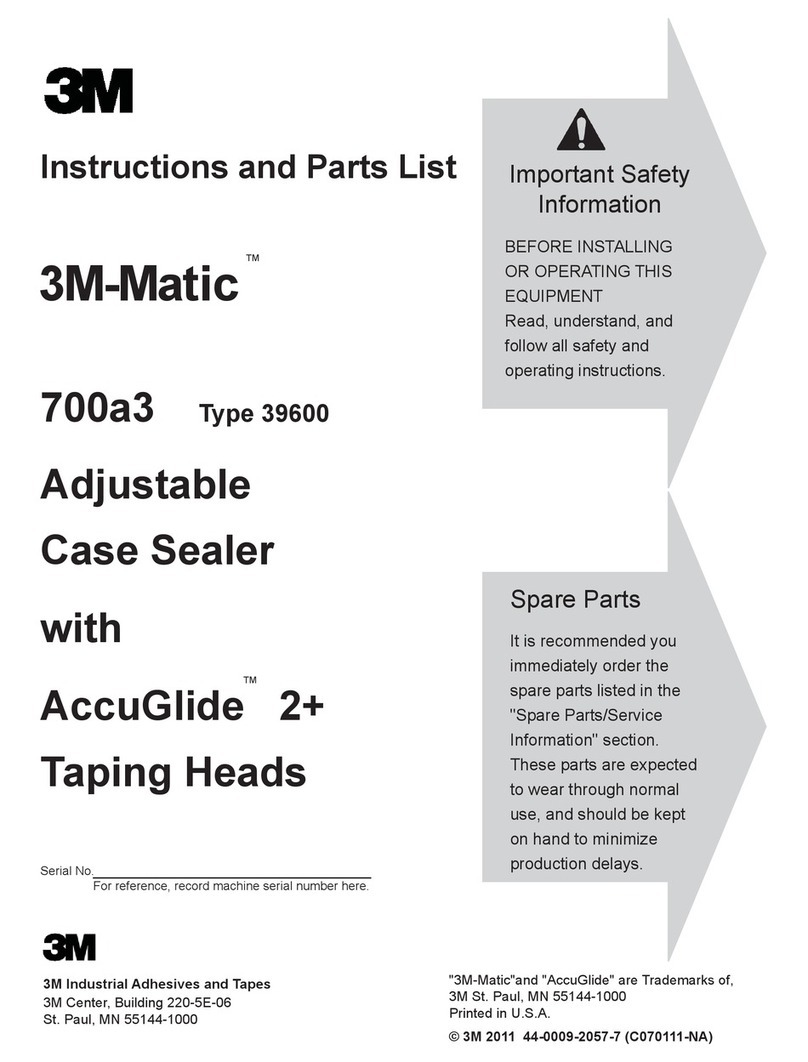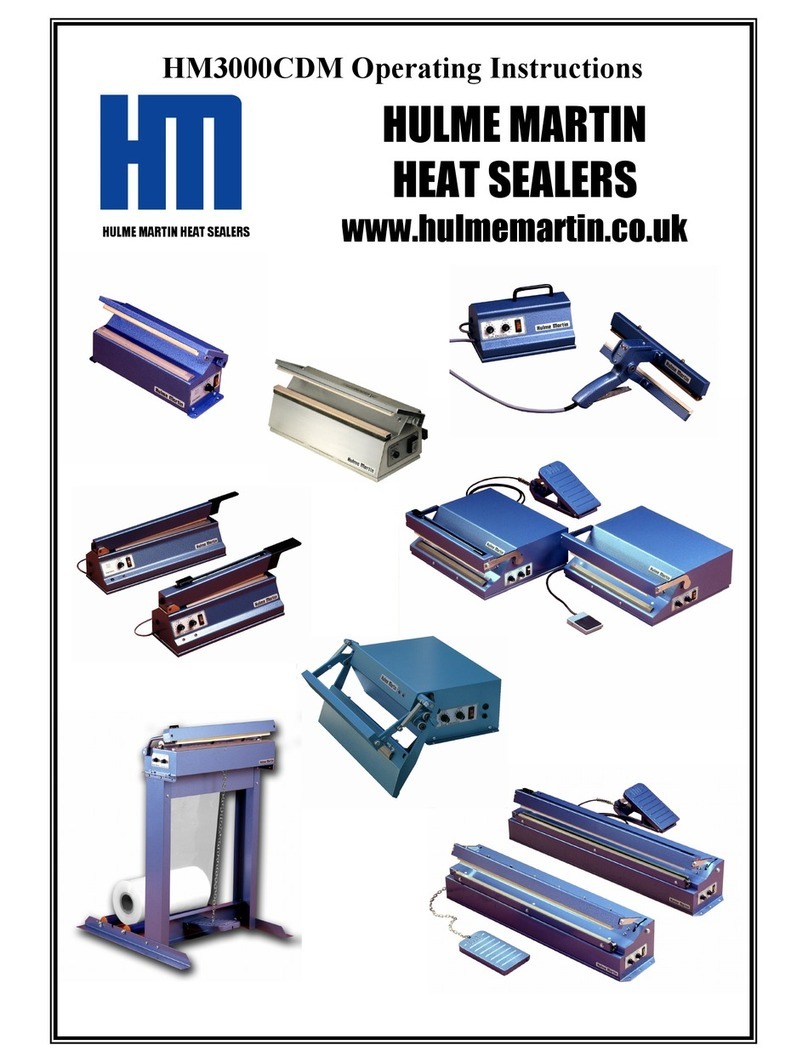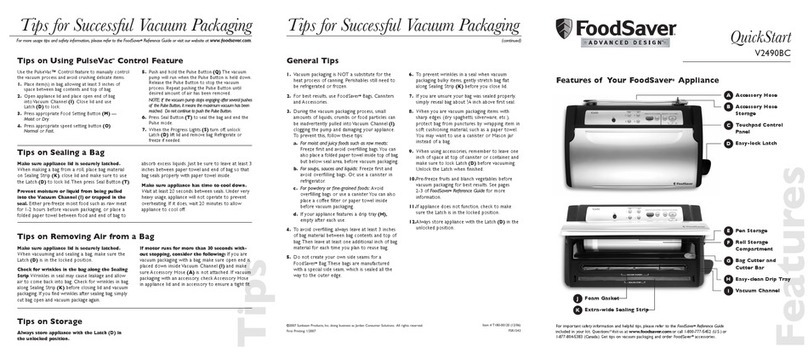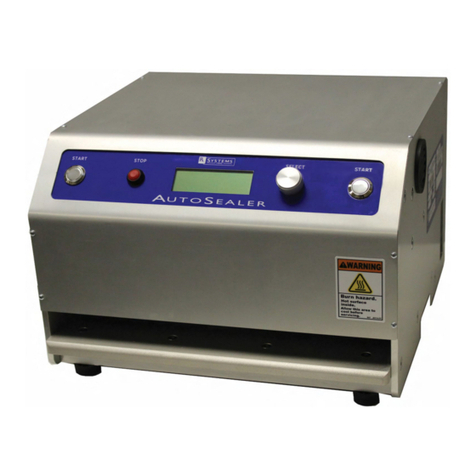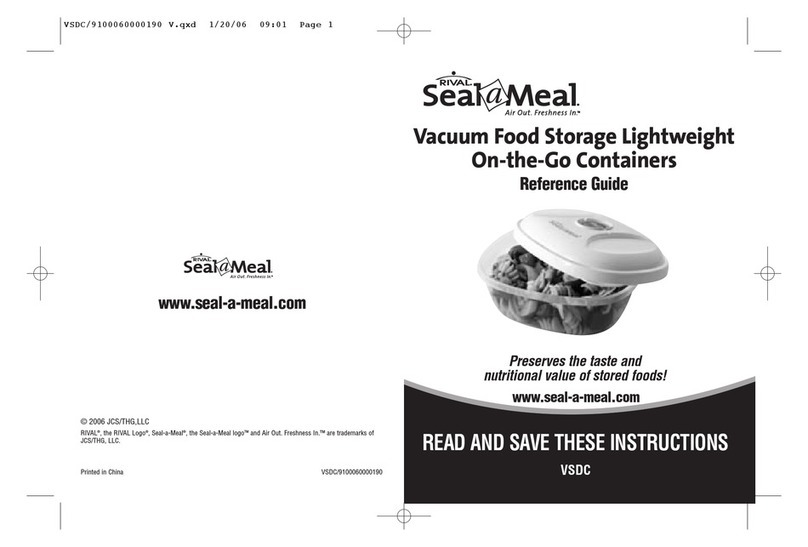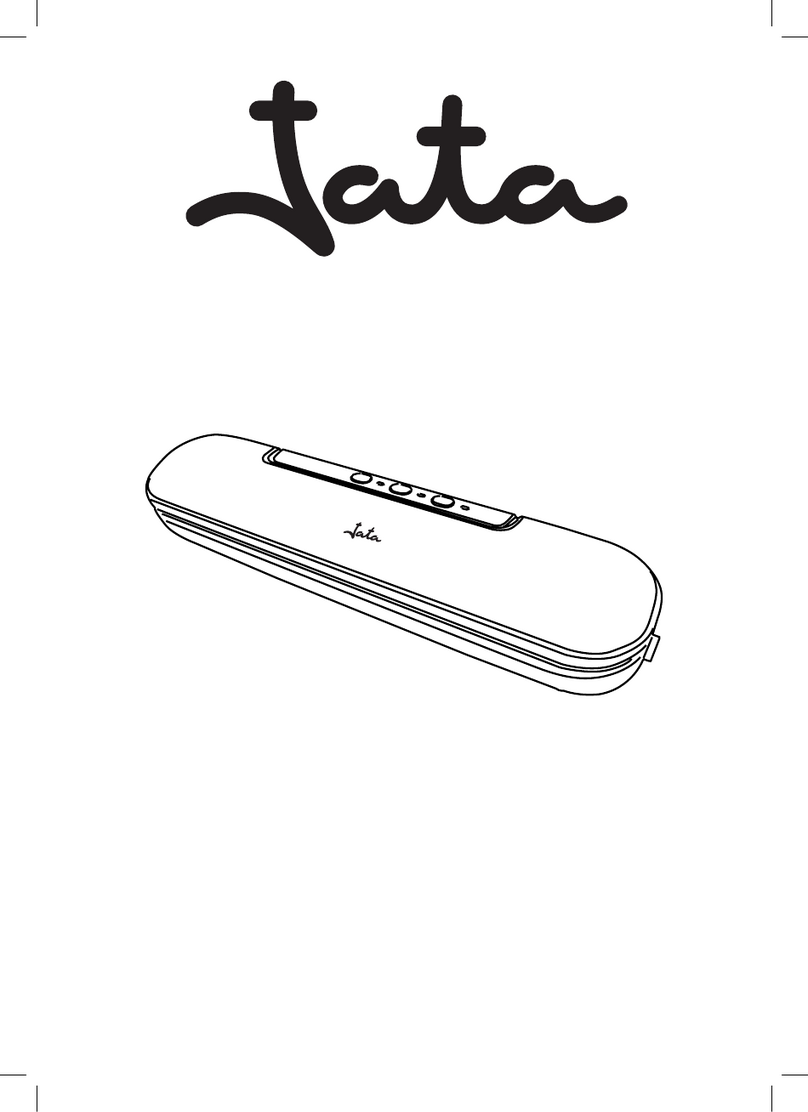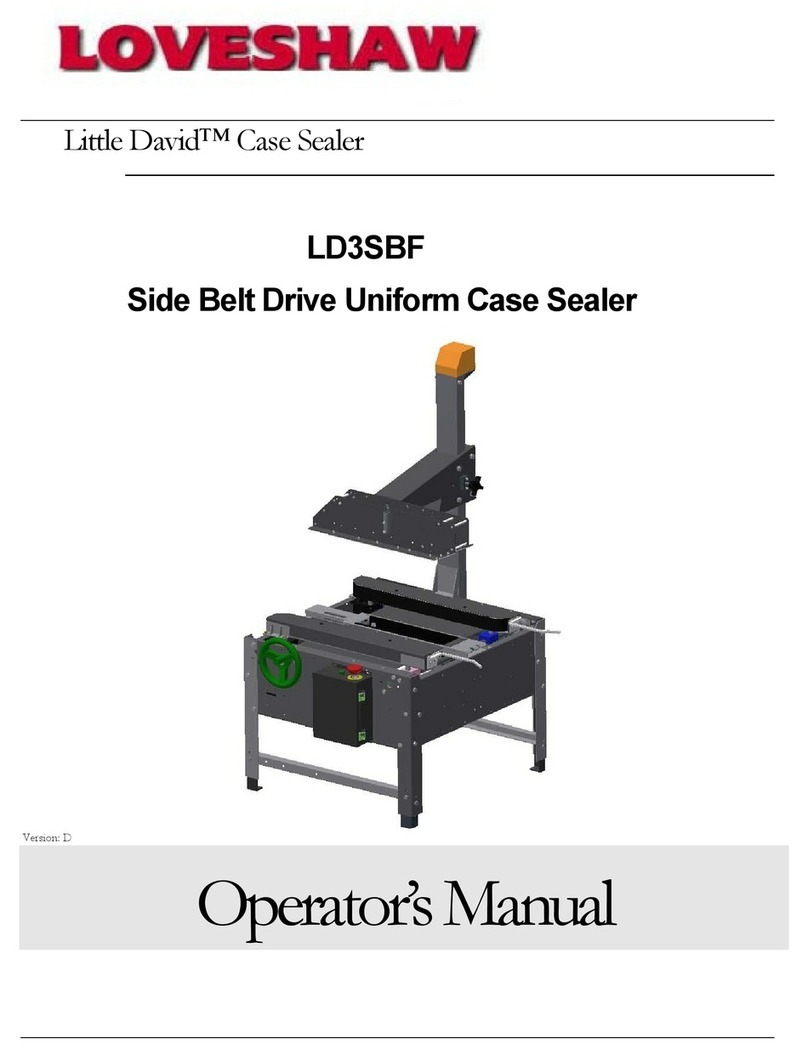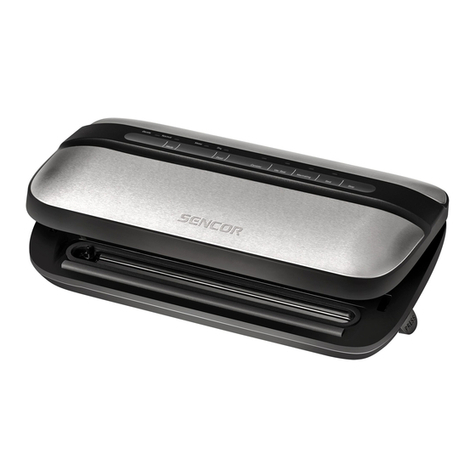Private Reserve HPRV950 User manual

USER MANUAL
HPRV950
COMMERCIAL VACUUM SEALER

Hydrofarm.com
2

TABLE OF CONTENTS
OVERVIEW 4
SAFETY 7
TIPS FOR VACUUM SEALING DRIED HERBS 8
FOOD STORAGE & SAFETY 8
FOOD PREPARATION HINTS AND TIPS FOR AIRTIGHT VACUUM SEALING 8
PREPARATION HINTS FOR MEAT AND FISH 8
PREPARATION HINTS FOR CHEESES 8
PREPARATION GUIDELINES FOR VEGETABLES 8
MORE ON VEGETABLES 9
HOW TO MAKE CUSTOMSIZED BAGS 9
HOW TO VACUUM SEAL WITH VACUUM BAGS 9
HOW TO USE THE PULSE VACUUM FUNCTION 9
HOW TO USE THE VACUUM SEALER WITH A CANISTER 10
HOW TO MARINATE FOODS 10
TROUBLESHOOTING 10
WARRANTY 12
3

OVERVIEW
Thank you for purchasing the HPRV950 Commercial Vacuum Sealer. This new vacuum sealer offers
heavy-duty performance with a stronger vaccum than our consumer grade model, as well as a
double seal. Its control panel allows you to choose vaccum time as well as sealing time, and also has
a pulse vacuum function which allows you to control exactly how much vacuum to apply in cases
where caution is needed in order not to crush delicate materials. Additional features include highly
useful canister and marinate functions.
For information on additional Private Reserve products please visit Hydrofarm.com.
SPECIFICATIONS
Amperage 3.2A
Wattage 225W
Voltage 120V, 60Hz
Dimensions 16.5" L x 11.7" W x 5.0" H (424 x 297 x 127 mm)
Weight 10.5 lbs
Vacuum Degree -0.6~-0.93 bar
For indoor use ONLY
4

LEGEND
A. LID
B. SILICON SEALING LINE
C. LOCK CATCH
D. SEALING GASKET
E. SEALING GASKET
F. HEATING BAR
5

SEAL TIME +: Button for increasing sealing time
SEAL TIME : Button for decreasing sealing time
Seal time range: 1–15 seconds
Up Arrow: Button for choosing function upwards
Down Arrow: Button for choosing function downwards
VAC TIME +: Button for increasing vacuum time
VAC TIME: Button for decreasing vacuum time
Vac time range: 0–80 seconds
CANCEL/OFF: Button for cancel the ongoing process; press it for 2 seconds to turn off the sealer.
START/ON: Button for turning on the sealer and to start a working process
VAC SEAL: When the pointer stops at VAC SEAL, it means that the machine will perform
vacuum & seal.
SEAL ONLY: When the pointer stops at SEAL ONLY, the machine will perform sealing only.
SPEED: When the pointer stops at SPEED and the indicator light on SPEED is on, it means the
machine will perform with high speed. Press START/ON and the indicator light on SPEED will turn off
and the machine will perform with low speed.
PULSE VAC: When the pointer stops at PULSE VAC, the machine will perform vacuum with the
control of the user.
CANISTER: This function is used when the machine is connected to a vacuum canister.
MARINATE: This function is used to marinate food packed in a vacuum canister.
CONTROL PANEL LEGEND
6

SAFETY
For your safety, follow these precautions when using your vacuum sealer:
• Read these instructions carefully before using the machine for the first time.
• Do not use the vacuum sealer on wet or hot surfaces, or near a heat source.
• Do not immerse machine or power cord in water or any other liquid.
• Plug vacuum sealer into grounded power sources only; do not use an extension cord.
• To disconnect, unplug directly from power source. Do not disconnect by pulling on cord.
• Do not operate the vacuum sealer with a damaged power cord.
• Only use the vacuum sealer for its intended use.
• Only use proper vacuum bags, accessories and attachments.
VACUUM PACKAGING AND FOOD SAFETY
Vacuum packaging extends the life of foods by removing most of the air from sealed containers
and prevents fresh air from seeping into the sealed containers, thereby reducing oxidation. Vacuum
packaging helps preserve flavor and overall quality. It also helps inhibit the growth of aerobic
microorganisms, which can lead to the problems noted below under certain conditions:
Mold – Mold cannot grow in a low oxygen environment; therefore vacuum packaging can virtually
eliminate it.
Yeast – Results in fermentation, which can be identified by smell and taste. Yeast needs water, sugar
and a moderate temperature to grow. It can also survive with or without air. Slowing the growth of
yeast requires refrigeration, while freezing stops it completely.
Bacteria – Results in an unpleasant odor, discoloration and/or soft or slimy texture. Under the right
conditions, Clostridium botulinum (the organism that causes Botulism) can grow without air and
cannot be detected by smell or taste. Although it is extremely rare, it can be very dangerous.
As with any other storage container, it is important to inspect food for spoilage prior to consuming.
To preserve foods safely, it is important to maintain low temperatures. You can significantly reduce
the growth of microorganisms at temperatures of 4ºC or below. Freezing at -17ºC does not kill
microorganisms, but stops them from growing. For long-term storage, always freeze perishable
foods that have been vacuum packaged.
It is important to note that vacuum packaging cannot reverse the deterioration of foods. It can only
slow down changes in quality. It is difficult to predict how long foods will retain their top-quality
flavor, appearance or texture because it depends on the age and the condition of the food on the
day it was vacuumed packaged.
Note: Vacuum packaging is not a substitute for refrigeration or freezing. Any perishable foods that
require refrigeration must still be refrigerated or frozen after vacuum packaging.
VACUUM SEALING GUIDELINES
TIPS FOR VACUUM SEALING DRIED HERBS
When preparing dried herbs for vacuum sealing, a few important points should always be observed:
Be certain that your herbs are very dry. When your dried flowers and herbs are ready for vacuum
sealing, make sure there isn’t additional moisture hidden in the stems. If you attempt to bend the
stems, they should snap and break. When stems crease instead of breaking, this indicates that there
is still too much moisture contained in them. If you vacuum seal herbs that are not sufficiently dry,
mold and/or anaerobic bacteria is very likely to grow within the sealed package and will ruin the
aroma, safety, and quality of the herbs.
7

Don’t over-vacuum your dried herbs. During the vacuum process, before the heat seal happens,
dried flowers and herbs can become crushed if the vacuum is engaged for too long a period. Once
the package starts to form around your herbs, engage the heat seal function. This will stop the
vacuum from removing the last bit of air from the package, and prevent your herbs from being
smashed. You may need to try different vacuum times to achieve the desired effect.
Prevent stems from puncturing the vacuum bag. Our vacuum bags are very strong, so punctures
are unlikely. However, if a stem or other sharp object should cause a puncture in the vacuum bag,
this will ruin the vacuum seal. Simply open the bag, remove the sharp object, replace the punctured
bag, and complete the vacuum sealing process again.
Folds in the seal create leaks. Make sure the bag lays flat on the sealer before securing the lid
closed. If a fold occurs before the sealing process, the bag will not have an air tight seal. If this
happens, trim off the faulty seal, reinsert the bag making sure it is flat on the sealing element,
and complete the process again. Faulty seals can lead to mold and anaerobic bacteria, which will
damage your goods.
FOOD STORAGE & SAFETY
IMPORTANT: Vacuum packaging is NOT a substitute for refrigeration or freezing. Any perishable
foods that require refrigeration must still be refrigerated or frozen after vacuum packaging.
For best result in extending the life of foods, it is important to vacuum package foods that are fresh.
Once food has begun to deteriorate, vacuum packaging may only slow the deterioration process.
Vacuum sealing cannot prevent the growth of mold. Other disease-causing microorganisms can still
grow in low oxygen environments and may require further measures to be eliminated.
FOOD PREPARATION HINTS AND TIPS FOR AIRTIGHT VACUUM SEALING
Cooking, Thawing and Reheating: Simmering in a vacuum bag helps food retain its flavor and it
helps with the clean-up as well (no dirty saucepans!). When reheating foods in the microwave using
your vacuum bags, always puncture the bag to allow hot air to escape. You can also reheat foods in
the vacuum bags by placing them in water at a low simmer below 170°F (75°C).
IMPORTANT: Always thaw foods in either the refrigerator or microwave—do not thaw perishable
foods at room temperature.
PREPARATION HINTS FOR MEAT AND FISH
Try pre-freezing meats and fish for 1 to 2 hours before vacuum packaging. This helps retain the juice
and shape, and provides for a better seal.
If you can’t pre-freeze, place a folded paper towel between the food and top of the bag, but below
seal area. Leave paper towel in bag to absorb excess moisture and juices during vacuum packaging
process.
PREPARATION HINTS FOR CHEESES
Vacuum package cheese after each use. If you make your bag just a little longer than needed, you
can reseal the bag after each use.
IMPORTANT: Due to the risk of anaerobic bacteria, soft cheeses should never be vacuum packaged.
PREPARATION GUIDELINES FOR VEGETABLES
Blanching is a process that should be done before vacuum packaging vegetables. This process stops
the enzyme action that could lead to loss of flavor, color and texture. To blanch vegetables, place
them in simmering water or in a microwave until they are cooked, but still crisp. Blanching times can
range from 1 to 2 minutes for leafy greens and peas; 3 to 4 minutes for snap peas, sliced zucchini
8

or broccoli; give carrots about 5 minutes; and 7 to 11 minutes for corn on the cob. After blanching,
immerse vegetables in cold water to stop the cooking process.
NOTE: All vegetables (including broccoli, Brussels sprouts, cabbage, cauliflower, kale, turnips)
naturally emit gases during storage. Therefore, after blanching, it’s best if they’re stored in the freezer.
MORE ON VEGETABLES
Vegetables are a great candidate for portion control. When storing vegetables, try pre-freezing them
for 1 to 2 hours, then separate them into meal portions within your vacuum bags. After they have
been vacuum packaged, return them to the freezer.
IMPORTANT: Due to the risk of anaerobic bacteria, fresh mushrooms, onions & garlic should never
be vacuum packaged.
HOW TO MAKE CUSTOM-SIZED BAGS
• Pull enough bag material to hold item to be vacuum packaged, plus 2 inches. With a pair of
scissors or sharp knife, cut desired bag length from bag roll. Make sure to cut in a straight line.
Plug in power cord.
• Open lid. Place one end of cut bag onto sealing strip.
• Close lid.
• Press START/ON button and the screen will light up.
• Choose SEAL ONLY function, and press the START button directly so that the sealer starts to
seal the bag with default time; alternatively, you can adjust the seal time by pressing SEAL TIME
+ and/or SEAL TIME - then press START/ON button.
• The indicator number of SEAL TIME will count down to 0 and the sealing process will be done,
with the custom-sized bag now ready for vacuum sealing.
CAUTION: Make sure you give the appliance time to cool down. Wait at least 20 seconds between
seals.
HOW TO VACUUM SEAL WITH VACUUM BAGS
Place the item(s) to be sealed into the pre-cut or custom-sized bag. Leave at least 2 inches between
the contents and the top of the bag to allow for bag contraction.
Open lid and place the open end of the bag down into the sealing gasket area.
Close lid and turn on the machine.
Choose VAC SEAL function. Press the START/ON button and the sealer will perform vacuum and
sealing automatically; OR you can set the vacuum time and seal time with the corresponding
buttons and then press the START/ON button.
The indicator number of SEAL TIME counts down to 0 and the working process is done.
When the process is done, you can open the lid with the handle and take out the sealed bag.
HOW TO USE THE PULSE VACUUM FUNCTION
Since the pressure under the normal vacuum function can be high, sometimes you must take
care not to crush delicate items by high pressure in the vacuum bags. In this case, you can use the
’’PULSE’’vacuum function to control the vacuum time and pressure, and prevent crushing delicate
items. When packing juicy foods, you can also use this function to prevent liquid being sucked out.
Place the item(s) to be sealed into the pre-cut or custom-sized bag. Leave at least 2 inches between
the contents and the top of the bag to allow for bag contraction.
Open the lid and place the open end of the bag down into the sealing gasket area.
9

Close lid and turn on the machine.
Choose the PULSE VAC function.
Press“Start”button to make the pulse vac function standby.
Press the VAC TIME + button continually until it reaches the pressure that you want. You can watch
the vacuum bag to decide the pressure. During this process, you can stop the vacuum by releasing
pressure on this button, and you can resume vacuum by pressing it again.
When the desired vacuum level is reached, press the START/ON button to start sealing.
The indicator number of SEAL TIME counts down to 0, at which point the process is finished.
HOW TO USE THE VACUUM SEALER WITH A CANISTER
NOTE: Canister is not included in the package; accessory hose may not fit all canister lids.
• Wipe the canister cover and canister base and ensure they are clean and dry.
• Place food into canister and leave at least one inch of space between food and cover.
• Place cover onto canister and insert one end of accessory hose into port on appliance. Put the
other end onto canister port, pressing down firmly to ensure a tight fit.
• Close lid and turn on the machine.
• Choose Canister function and press START/ON button.
• The unit will continue to vacuum until air has been removed.
HOW TO MARINATE FOODS
There is a special function in the HPRV950: the marinate mode. In the marinate mode, the machine
can run two cycles of vacuuming and releasing air to the canister, allowing foods to get optimum
marinade infusion in the least amount of time.
A vacuum canister is a perfect partner for marinating foods. The reason that foods can be marinated
in such a short time is that the process opens the micropores of the foods, allowing marinade or
pickle brine infusion very quickly.
Important Tips: When using a canister for marinating, there should be a knob on the canister lid.
Make sure the canister lid is in“Open” status but NOT“Vacuum”status when it is in the marinating
process.
1. Put items in the canister. Make sure there is no powder or food debris on the canister lid gasket.
Also please allow some space after the items are put into the canister. Close the lid.
2. Turn the knob on the canister lid to the“Open” position.
3. Connect the hose to the accessory port on the machine and the port on the canister lid.
4. Close the sealer’s lid and choose the MARINATE function.
5. Press the START/ON button.
6. When the vacuum sealer reaches the proper vacuum pressure, it will stop vacuum automatically
and then release air into the canister. This cycle repeats continually for 30 minutes and then
stops automatically.
7. The sealer vacuums the canister again. The above mentioned cycle will be run two times.
8. Press the CANCEL/OFF button to stop all working processes and turn off the sealer.
TROUBLESHOOTING
Nothing happens when I press the ’’VACUUM’’ button:
• Make sure the power cord is correctly plugged into the electrical outlet.
• Make sure the power cord is not damaged in any way.
• Make sure the bag is positioned correctly down in the vacuum chamber.
10

• Wait 25 minutes to allow appliance to cool off, and then try using again.
Air is not vacuumed from the bag:
• Check that there are no gaps, folds, wrinkles or holes in the pre-sealed bags.
• Check for loose, worn or cracked upper and lower sealing gaskets.
• Foods with high liquid contents may prevent the bag from sealing properly. Cut bag open and
wipe top inside of bag and reseal.
• Check to see if bag is properly inserted into the sealing gasket area.
• Make sure you’ve placed the bag in the proper place. When making a bag from a roll, make
sure end of cut piece is on the sealing strip.
The bag melts:
• The sealing strip may have been too hot during the sealing process. Allow the unit to cool for
20 seconds between uses. If the bag continues to melt, allow unit to cool with the lid in the
upright position for 25 minutes before using.
Air has seeped back into the vacuumed bag:
• Check the seal of the bag. There may be a hole or wrinkle that is allowing air to reenter the bag.
Carefully cut the bag open and re-seal it, or use an entirely new bag.
• Make sure there is no moisture or liquid from the food present within the bag seal. You may
need to cut open the bag and re-seal it, or use an entirely new bag. For foods with excess
liquids, partially freeze prior to vacuum sealing.
• Make sure there are no food items with sharp edges that may have punctured the bag. If you
find a puncture hole, seal the item in an entirely new bag.
• Make sure no liquids were drawn to the sealing strip area.
• Check for loose, worn or cracked upper and lower sealing gaskets.
• Moisture of foods with high liquid content will prevent the bag from sealing properly. Cut bag
open and wipe top inside of bag and reseal.
Bag will not seal:
• Check that there aren’t any gaps, folds, wrinkles or holes in pre-sealed edges.
• Moisture of foods with high liquid content will prevent the bag from sealing properly. Cut bag
open and wipe top inside of bag and reseal.
• Make sure the seal time you set is long enough to achieve a good seal.
• Make sure you’ve placed the bag in the proper place. When making a bag from a roll, make
sure the open (cut) end of the piece is on the sealing strip.
• Make sure you’ve given the appliance time to cool down. Wait 20 seconds between seals.
11

Hydrofarm.com
HPRV950 Instructions revised - September 28, 2017 8:41 AM
WARRANTY
Thank you for choosing Private Reserve by Hydrofarm. For further information
about Private Reserve products, videos, and technical information,
please visit Hydrofarm.com
LIMITED WARRANTY
Hydrofarm warrants the HPRV950 to be free from defects in materials and workmanship. The warranty term is for
1 year beginning on the date of purchase. Misuse, abuse, or failure to follow instructions is not covered under this
warranty. Hydrofarm’s warranty liability extends only to the replacement cost of the product. Hydrofarm will not be
liable for any consequential, indirect, or incidental damages of any kind, including lost revenues, lost profits, or other
losses in connection with the product. Some states do not allow limitation on how long an implied warranty lasts or
the exclusion of incidental or consequential damages, so the above limitations or exclusions may not apply to you.
Hydrofarm will, at our discretion, repair or replace the HPRV950 covered under this warranty if it is returned to the
original place of purchase. To request warranty service, please return the HPRV950, with original sales receipt and
original packaging, to your place of purchase. The purchase date is based on your original sales receipt.
Like us on Facebook, follow us on Twitter,
and check out Hydrofarmtv on YouTube and Instagram!
Get Connected with the Hydrofarm Community:
Table of contents
Other Private Reserve Food Saver manuals
